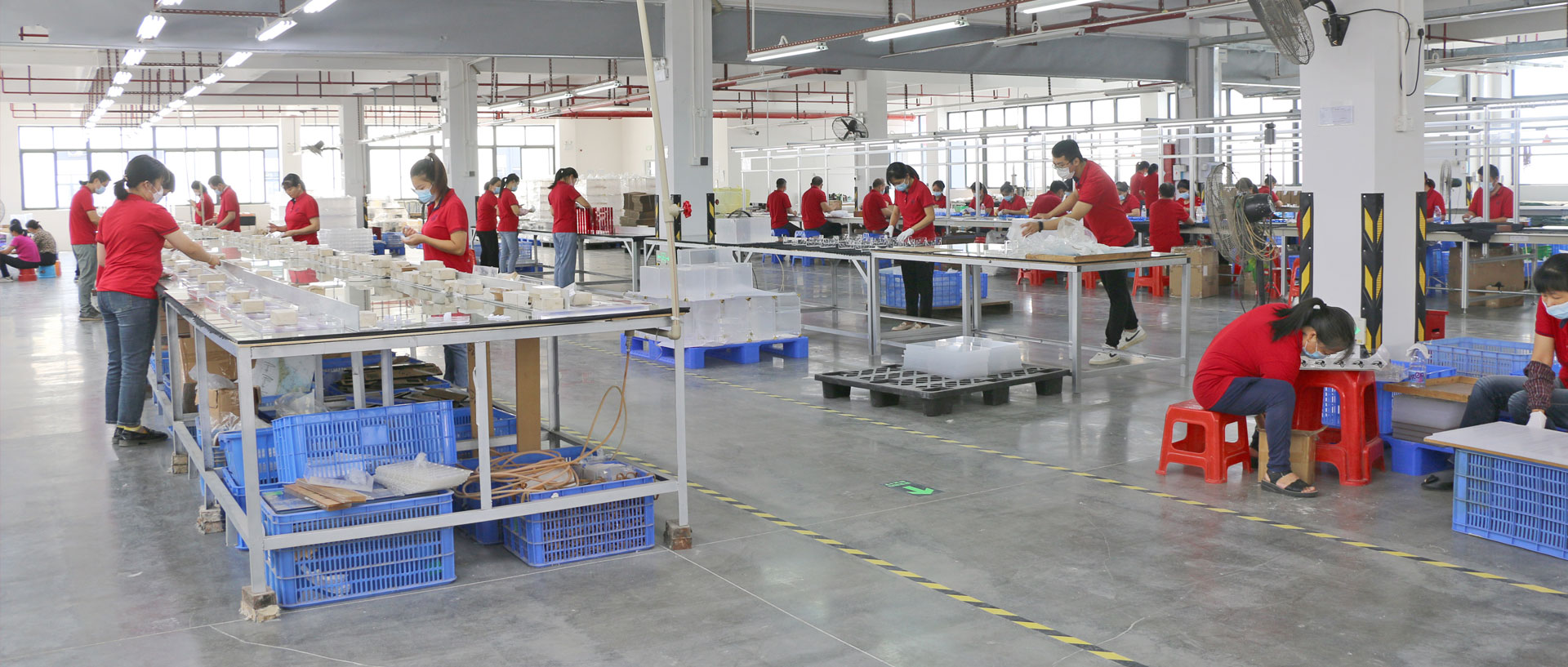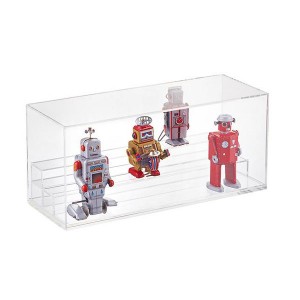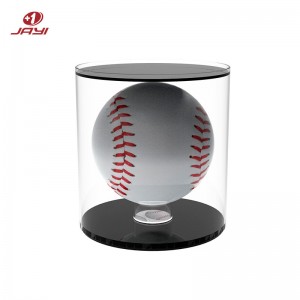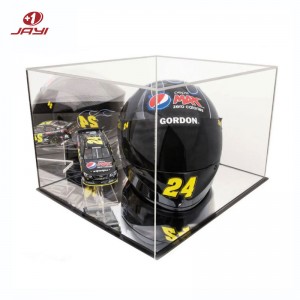
In the competitive world of retail, museums, and event exhibitions, the way you showcase your products or artifacts can make or break customer engagement. But what if there’s a solution that not only elevates your displays but also slashes your costs by up to 30%?
Enter acrylic display cases—a versatile, durable, and budget-friendly alternative to traditional materials like glass or wood. Let’s dive into why acrylic is revolutionizing display strategies and how it can transform your budget without compromising on aesthetics or functionality.
Why Acrylic Outperforms Traditional Materials
When it comes to display cases, glass has long been the go-to choice for its clarity. However, glass is heavy, fragile, and expensive—both in terms of initial purchase and long-term maintenance.
A single glass display case can cost twice as much as an acrylic equivalent, and the risk of breakage during transportation or installation adds hidden costs like replacements and repairs.
Wood, another common material, lacks the transparency needed to highlight products and often requires regular polishing or painting to maintain its appearance, driving up upkeep expenses.
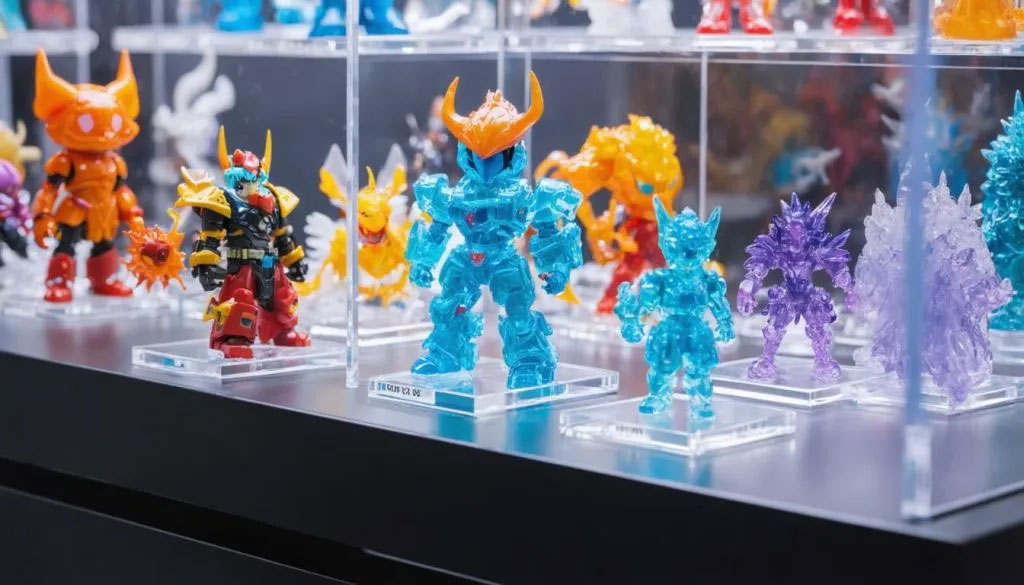
Acrylic, on the other hand, offers a winning combination of transparency, durability, and affordability.
Also known as plexiglass or PMMA, acrylic boasts 92% light transmittance—almost as clear as glass—while being 17 times more impact-resistant.
This means fewer cracks, chips, or shatters, reducing the need for frequent replacements.
Additionally, acrylic is lighter than glass, making it easier and cheaper to transport and install.
A study by the Display Industry Association found that businesses switching to acrylic display cases reduced their annual maintenance costs by an average of 28%, with some seeing savings as high as 35%.
Cost-Saving Benefits of Acrylic Display Cases
The 30% cost reduction claim isn’t just a marketing slogan—it’s backed by tangible savings across multiple areas:
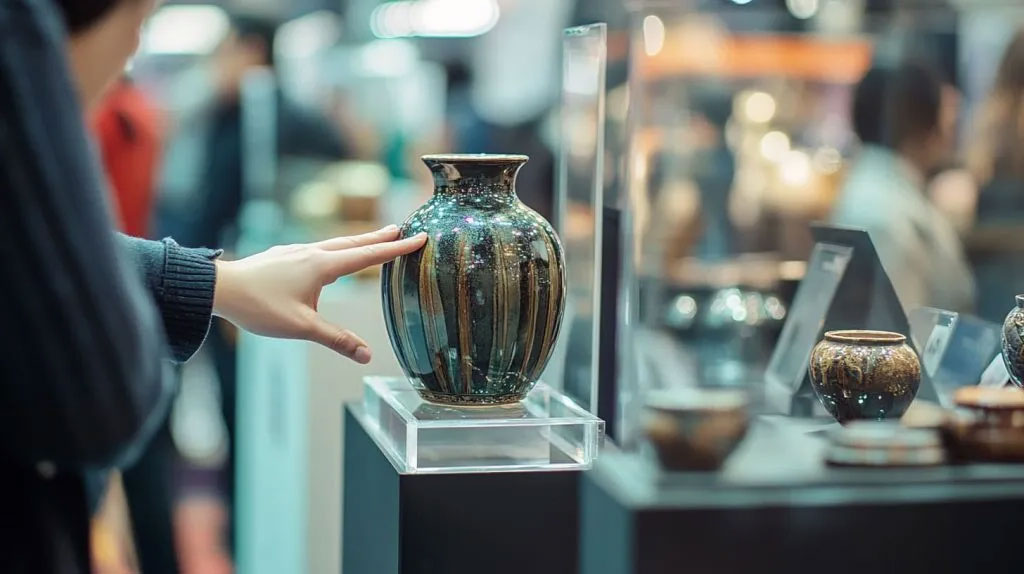
1. Lower Initial Investment
Acrylic display cases shine when it comes to upfront costs, making them a smart pick for budget-conscious businesses.
The manufacturing process for acrylic is more streamlined than glass, which demands specialized cutting and handling, driving up production expenses. This efficiency translates directly to lower price tags for buyers.
Even custom designs, from unique shapes to specific dimensions, cost far less with acrylic than comparable glass or wood options, letting you get more display value without overspending on day one.
2. Reduced Shipping and Installation Costs
The lightweight nature of acrylic (about half the weight of glass) cuts down on shipping fees.
Whether you’re ordering cases for a single store or a chain of locations, lower weight means lower transportation costs.
Installation is also cheaper and safer: acrylic cases can be maneuvered by fewer people, reducing labor expenses and the risk of workplace injuries associated with lifting heavy glass.
3. Minimal Maintenance and Longevity
Acrylic is resistant to scratches (when properly cared for) and doesn’t yellow over time like some plastics.
Unlike wood, it doesn’t warp or rot in humid environments, making it ideal for museums, bakeries, or jewelry stores.
A simple cleaning with a microfiber cloth and mild soap is all it takes to keep acrylic cases looking pristine, eliminating the need for expensive polishes or treatments.
With a lifespan of 5-10 years (compared to 3-5 years for glass in high-traffic areas), acrylic cases provide better value over time.
4. Energy Efficiency in Lit Displays
Many acrylic display cases require lighting to highlight products.
Acrylic’s ability to transmit light efficiently means you can use lower-wattage bulbs without sacrificing brightness, reducing energy bills.
In retail settings where displays are lit for 12+ hours a day, this can lead to significant monthly savings.
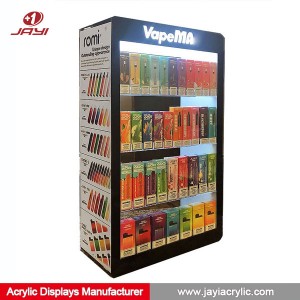
Acrylic Display Case with LED Light
Versatility: Beyond Cost Savings
Acrylic’s flexibility in design is another reason it’s becoming a favorite among businesses. It can be molded into curved shapes, frosted for privacy, or printed with logos and designs—all without compromising clarity.
This versatility allows brands to create unique, branded displays that stand out, enhancing customer experience while staying within budget.
For museums, acrylic display cases offer UV protection (when treated), safeguarding delicate artifacts from sunlight damage—a feature that’s often costly to add to glass cases.
In restaurants, acrylic sneeze guards and food displays are easy to clean and maintain, ensuring compliance with health regulations without breaking the bank.
Real-World Success Stories
Don’t just take our word for it—numerous businesses have already reaped the benefits of switching to acrylic:
Success Case 1: Jewelry Store
A 15-location boutique jewelry chain swapped all glass display cases for acrylic alternatives, yielding impressive results. Annual display-related expenses dropped by 32%, a significant cost cut.
Additionally, customer interactions caused fewer damaged cases, saving $5,000 more in replacements. This switch highlights acrylic's durability and cost-efficiency—key for retail chains.
The upgrade balanced protection for valuable jewelry with better affordability, proving acrylic’s practical edge over traditional glass in high-traffic retail settings.
Success Case 2:Natural History Museum
A natural history museum upgraded its artifact displays to UV-protected acrylic cases, delivering notable benefits. Maintenance costs fell by 27%, easing operational burdens.
More crucially, the acrylic’s UV shielding extends exhibit lifespans, preserving delicate specimens from light damage.
This shift underscores acrylic’s dual advantages: durability for long-term use and protective properties critical for irreplaceable artifacts.
The upgrade blends cost efficiency with enhanced preservation, making it a smart choice for institutions balancing conservation and budget management.
Success Case 3:Bakery
A bakery franchise transitioned to acrylic pastry displays, with impressive outcomes.
Easier cleaning and reduced shipping costs emerged as key drivers, leading to a 29% drop in display expenses.
Acrylic’s smooth surface simplifies sanitization—vital for food safety—while its lighter weight cuts transit costs.
This shift highlights acrylic’s practicality for food retail, balancing hygiene needs with financial efficiency.
For the franchise, the upgrade proved a smart move, enhancing operations and bottom-line results across locations.
How to Choose the Right Acrylic Display Case
Cleaning acrylic stands is relatively easy. Use a soft, microfiber cloth and a mild soap solution. Avoid using abrasive cleaners or rough materials, as they can scratch the surface. Gently wipe the stand in a circular motion to remove dust and stains.
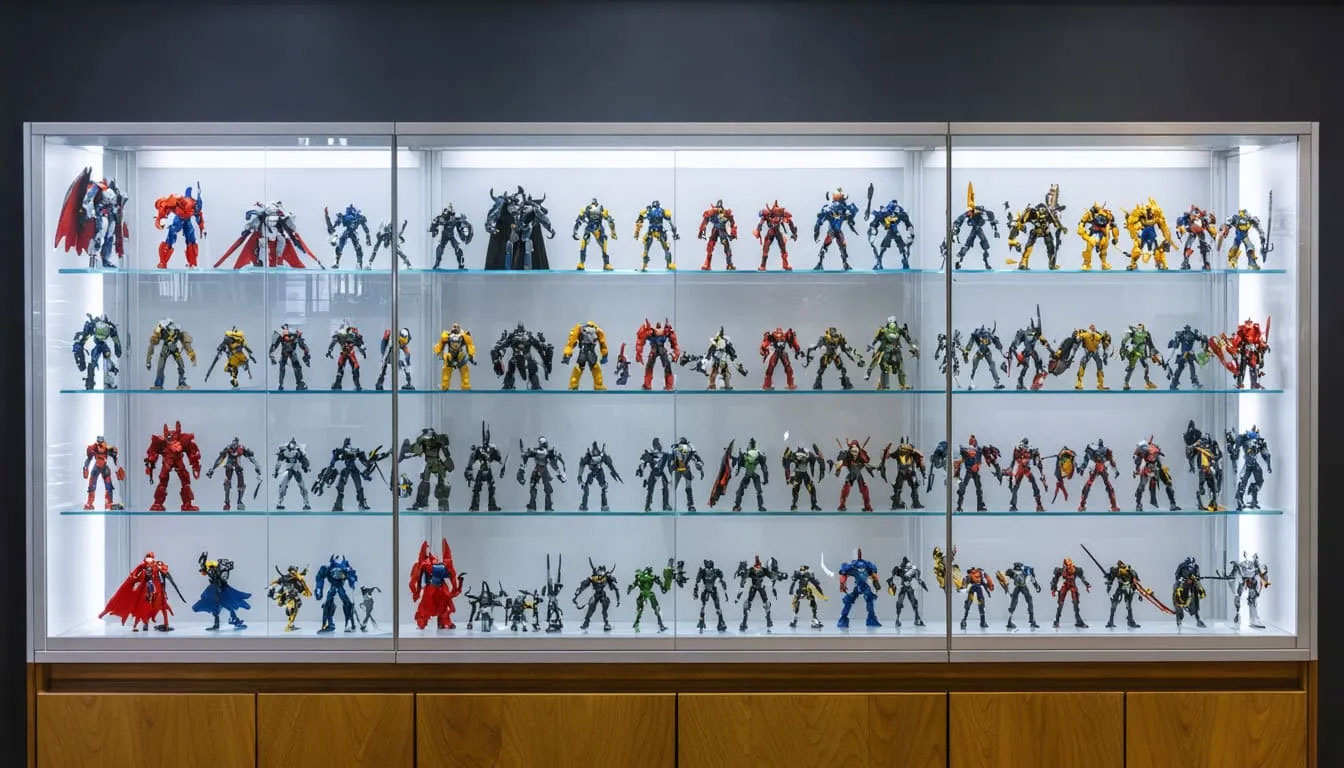
Thickness
The thickness of your plexiglass display case directly impacts its durability and ability to support weight. For most standard items like small electronics, jewelry, or collectibles, a 1/4-inch thickness offers a perfect balance of sturdiness and cost-effectiveness.
However, if you’re displaying heavier items—such as large artifacts, tools, or multiple products stacked together—opting for 1/2-inch thickness is crucial. Thicker acrylic resists warping under pressure and stands up better to frequent handling, reducing the risk of cracks over time.
While thicker acrylic may cost slightly more upfront, it avoids the need for premature replacements, making it a cost-saving choice for heavy or high-traffic displays. Always check the manufacturer’s weight capacity guidelines to match the thickness with your specific needs.
UV Protection
UV protection is a non-negotiable feature for displays exposed to natural or artificial light, especially in museums, art galleries, or retail spaces with large windows.
Acrylic can be treated with UV inhibitors during manufacturing, blocking up to 99% of harmful UV rays that cause fading, discoloration, or degradation of sensitive items, such as paintings, vintage documents, fabrics, or jewelry with gemstones.
Without this treatment, prolonged exposure to light can damage valuable pieces, necessitating costly restorations or replacements. When shopping, look for cases labeled “UV-resistant” or “UV-protected” and confirm the level of protection (typically 90%+ UV blockage) to ensure your items stay preserved for years.
Customization
Customizing your acrylic display case to fit your products exactly is key to avoiding unnecessary costs and maximizing visual impact. Generic, one-size-fits-all cases often leave wasted space, require extra padding, or fail to highlight your items effectively—all of which can hurt customer engagement.
Work directly with manufacturers to design cases with precise dimensions, built-in shelving, or specialized features like locking mechanisms or magnetic closures that match your needs.
For example, a jewelry store might need small, compartmentalized cases, while a bakery requires clear, open-top displays with sloped fronts for easy viewing. Customization also allows you to incorporate brand elements like etched logos or colored edges, enhancing brand recognition without overspending.
By focusing on only the features you need, you avoid paying for unused space or irrelevant add-ons, keeping costs in check while creating a tailored display solution.
Supplier Reputation
Choosing a reputable supplier is critical to ensuring your acrylic display cases are high-quality, durable, and worth the investment. Low-grade acrylic from unreliable suppliers often yellows, cracks, or scratches easily—problems that lead to frequent replacements and higher long-term costs.
Research suppliers with positive reviews, a history of serving businesses in your industry (e.g., retail, museums, food service), and transparent information about their materials.
Ask for samples to test clarity, thickness, and scratch resistance before placing a large order. Reputable suppliers also offer warranties, ensuring they’ll replace defective cases and provide guidance on care and maintenance to extend your cases’ lifespan.
While they may charge slightly more than budget suppliers, the quality and reliability they offer prevent costly headaches down the line, making them a smarter financial choice in the long run.
Jayiacrylic: Your Leading China Custom Acrylic Display Case Manufacturer
Jayi acrylic is a professional custom acrylic display case manufacturer in China. Jayi’s Acrylic Display solutions are crafted to enthrall customers and present products in the most alluring way. Our factory holds ISO9001 and SEDEX certifications, guaranteeing top-notch quality and ethical manufacturing practices. With more than 20 years of experience partnering with leading brands, we fully grasp the significance of designing retail displays that amplify product visibility and stimulate sales.
Conclusion
Acrylic display cases are more than just a budget-friendly option—they’re a smart investment that combines durability, versatility, and cost efficiency.
By reducing initial costs, maintenance expenses, and energy usage, they can easily cut your display costs by 30% or more while enhancing the visual appeal of your products or artifacts.
Whether you’re a small retail store, a large museum, or a bustling restaurant, making the switch to acrylic could be the key to elevating your displays and boosting your bottom line.
Ready to start saving? Explore acrylic display case options today and see the difference for yourself.
FAQ: Common Questions About Acrylic Display Cases

How Durable Are Acrylic Display Cases Compared to Glass?
Plexiglass display cases are far more durable than glass.
They’re 17 times more impact-resistant, meaning they’re less likely to crack or shatter from bumps or drops.
While glass breaks easily, acrylic withstands daily use in high-traffic areas like retail stores or museums, reducing replacement needs and long-term costs.
Can Acrylic Display Cases Scratch Easily?
Acrylic is resistant to scratches when cared for properly.
Avoid abrasive cleaners or rough cloths—use a microfiber cloth and mild soap instead.
For extra protection, some suppliers offer scratch-resistant coatings.
With gentle maintenance, acrylic cases stay clear and scratch-free for years, outperforming glass in busy environments.
What’s the Weight Capacity of Acrylic Display Cases?
Weight capacity depends on thickness.
A 1/4-inch thick case safely holds small items like jewelry or cosmetics (up to 10 lbs).
For heavier items—artifacts, tools, or electronics—opt for 1/2-inch thickness, which supports 20+ lbs.
Always check manufacturer guidelines to match the case to your products.
Are Acrylic Display Cases Customizable in Size and Shape?
Yes, acrylic is highly customizable.
Manufacturers can create cases in specific dimensions, with features like shelves, locks, or curved edges.
This flexibility lets you avoid wasted space and tailor displays to your products—whether small collectibles or large artifacts—without extra costs for unnecessary features.
Do Acrylic Cases Yellow over Time?
High-quality acrylic resists yellowing, especially when UV-protected.
Low-grade acrylic may yellow due to sunlight or heat, but reputable suppliers use stabilized materials.
UV-treated cases are ideal for sunlit areas, preserving clarity for 5-10 years.
Choose trusted suppliers to ensure long-lasting, clear displays.
You Might Also Like Custom Acrylic Display Cases
Post time: Aug-07-2025

